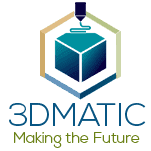The time it takes to bring a product to market is a major key to profitability for a product manufacturer.
Traditionally, after the conceptual stage for a product has been established, much time and cost are associated with the remaining phases of the product design cycle. The main phases are:
- The conceptual phase:
In this phase, the product idea is evaluated through investigative studies, engineering analyses, and comparative analyses of existing or similar product implementations. Then, a proposal for product development is developed and approved. - The design and prototyping phase:
This phase has several sub-phases, which include:- Analysis and development of functional requirements
- Design of the mechanics of the system for functionality
- Structural analysis, simulation studies, and identification of failure modes
- Prototyping and testing
- Re-design and re-engineering
- The implementation of the tooling phase:
In this phase, tooling and manufacturing procedures are established. It is a disaster if serious design flaws are detected at this stage because correcting errors becomes time-consuming and expensive. It is not unusual for a product development effort to be abandoned or postponed if serious design flaws are discovered in the implementation phase. - The production and maintenance phase:
Known but correctable problems are debugged and fixed as the product establishes a footprint in the market.
The most expensive and time-consuming phase in the product design cycle is the prototyping phase, which could require several iterative “build, test, and fix” cycles before entering the implementation phase.
Because Additive Layer Manufacturing (3D printing) has become a useful tool for prototyping, it is becoming an integral part of the product development cycle, and this article focuses on this.
Topics covered in this article are:
- What advantages does 3D printing have over traditional prototyping?
- What limitations should 3D printing overcome to provide Rapid Prototyping?
- How quickly is 3D printing being adopted for Rapid Prototyping?
What Advantages Does 3D Printing Have Over Traditional Prototyping?
The major advantages that 3D printing provides over traditional prototyping are the following:
- Traditional prototyping is time-consuming and costly because it uses traditional manufacturing methods to build a representation of the product. When design flaws are discovered during testing, an expensive, iterative design process is required. Compared with traditional methods, a 3D printer can build a prototype quickly and cheaply, thereby making the iterative design process less painful.
- The process of making a traditional prototype is lengthier because CAD design data should be translated into machine code for CNC machines or blueprints for making moulds. 3D printing converts CAD design data into STL code and sent directly to the 3D printer.
- Traditional prototyping uses subtractive manufacturing, which wastes material, while 3D prototyping uses additive layer manufacturing, which does not waste material.
- 3D prototyping is more versatile for printing complex geometric shapes than traditional manufacturing methods.
What Limitations Should 3D Printing Overcome to Provide Rapid Prototyping?
The goal of prototyping is to represent the product intent and test it with respect to fit, function, strength, manufacturability, and durability. The prototype should be a good representation of the product, and testing should be designed to reveal the performance and failure modes of the product under different operational and environmental conditions. Furthermore, the testing should ensure that all regulatory standards are met.
3D printing takes many forms. Because certain forms of 3D printing cannot make product prototypes with adequate structural strength, the use of the technology for prototyping is limited.
The first limitation is the ability of 3D printing to provide adequate structural strength.
Consider these comparisons:
- 3DP (Regular 3D printing) uses inkjet-like printing, which uses plaster (or liquid) binder-based powder to provide material strength of less than 2 ksi (less than 17 MPa).
- SLA (Stereolithography) uses laser-cured thermoplastic photopolymers, which can provide material strength of 2.5 – 10 ksi (17 – 70 MPa).
- SLS (Selective Laser Sintering) uses laser-sintered powdered materials (nylon, metals) that can provide material strength of 5 – 11 ksi (36 – 78 MPa).
- Traditional prototyping, which uses CNC machining of engineering-grade materials, can provide a material strength of 3 – 20 ksi (20 – 138 MPa).
Obviously, 3D printing can provide adequate prototyping, except when very high structural strength is required. This limitation will be overcome when higher-strength materials are developed for 3D printing.
The second limitation is the scalability of 3D printing. Large-scale 3D printers should be customized, such as large-scale 3D printers, which are used to print houses and aeroplane parts.
How quickly is 3D Printing Being Adopted for Rapid Prototyping?
When a form of 3D printing can provide functionality, strength, and durability for product intent, it becomes a suitable candidate for Rapid Prototyping. 3D printing overcomes the disadvantages of time and cost associated with traditional prototyping.
It is estimated that about two-thirds of industrial manufacturers use 3D printing for rapid prototyping. A few examples should make this clear:
- Ford Motors® uses 3D printers to print sand-based moulds into which molten metal is poured to make metal prototypes. Traditional moulds take about 8 to 10 times longer to make than 3D printers.
- Airbus® uses 3D printing both for prototyping and for manufacturing aeroplane parts. Doing so saves the company millions of dollars in production costs. It also lowers fuel costs because 3D printing shaves off significant aircraft weight.
- Invisalign® uses 3D printing for prototyping and manufacturing. The company makes it possible for a dentist to scan a patient’s teeth into a computer, and to have a 3D printer make the braces during one visit to the dentist.
Conclusions
The benefits that 3D printing provides for Rapid Prototyping are indisputable. When the limitations of adequate material strength and scalability are overcome, more manufacturers are likely to use 3D printing for prototyping (and for manufacturing) during the product development cycle.

